How To Grow And Care For Calathea Dottie?
Written by Ivy
Dec 30 2021
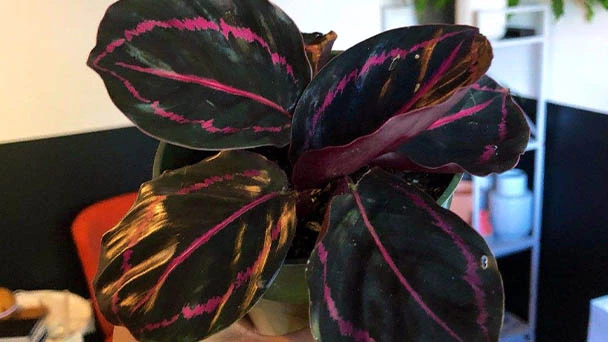
Calathea Dottie is a variant of Calathea roseopicta (Linden) Regel. The leaves of Calathea Dottie look like black, and the color of the leaf surface is particularly dark. There are some purplish red contours on the purplish red leaves. If we want to make Calathea Dottie look more beautiful, we should put Calathea Dottie in a place with bright light and high air humidity.
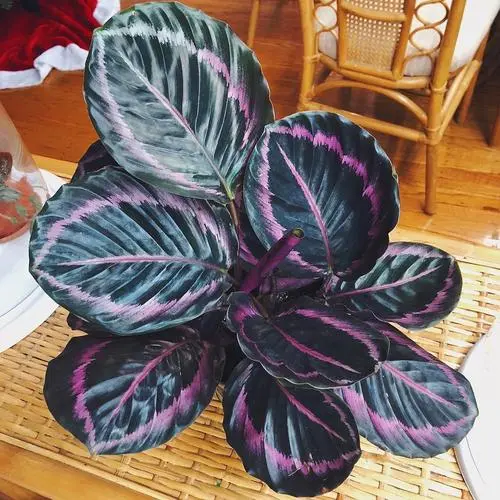
We're going to keep Calathea Dottie in the astigmatism. If Calathea Dottie is not exposed to sunlight for a long time, the edges of Calathea Dottie's leaves will slowly turn yellow. If we breed outdoors in summer, we should do a good job in summer for Calathea Dottie, and properly use shading sheds to avoid direct sunlight.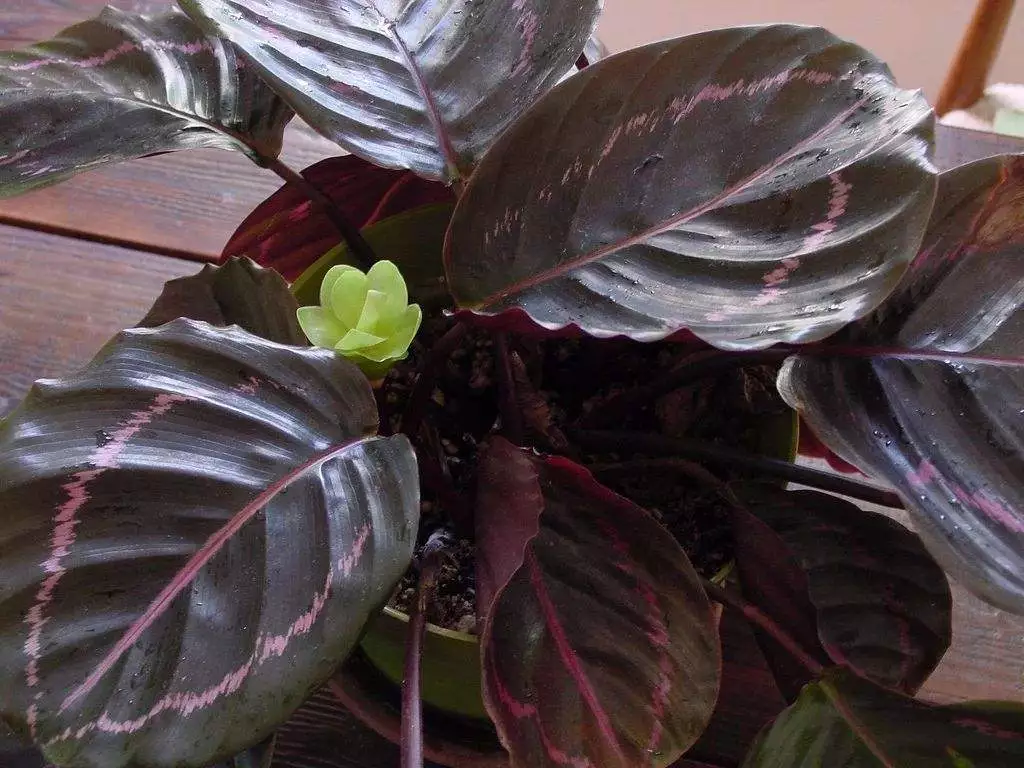
Calathea Dottie repotting can use a basin with a diameter of 12 ~ 15 cm and a mixture of culture soil, peat soil and coarse sand. We can carry out Calathea Dottie repotting every spring, cut off some old leaves, separate the roots and stems, and directly potted the sub plants with 2 ~ 3 strong roots and some leaves.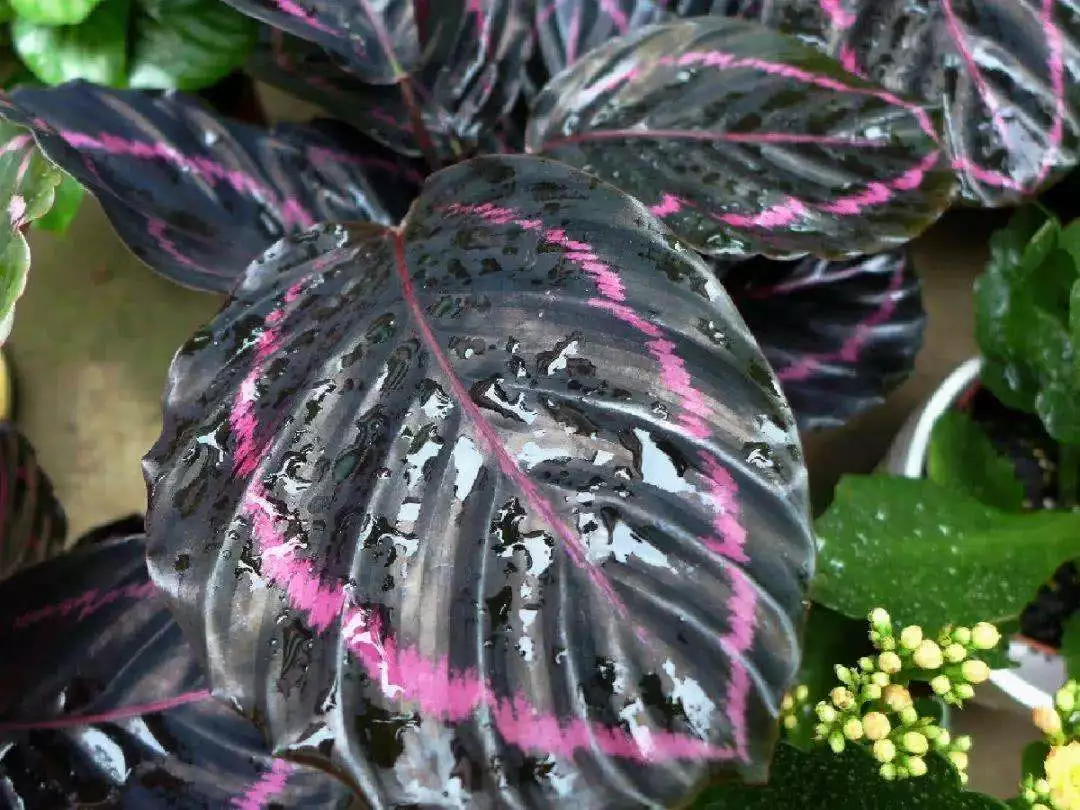
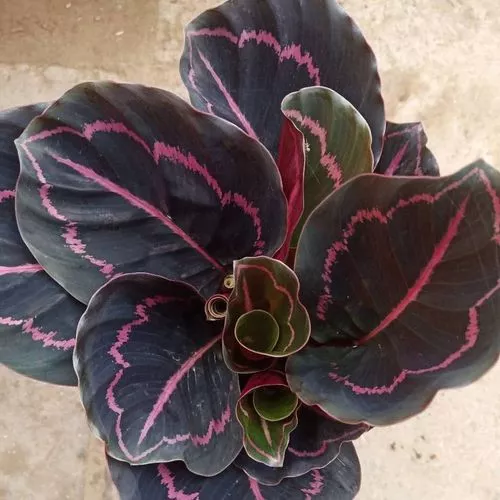
Calathea Dottie Quick InfoCalathea Dottie Care in DetailCalathea Dottie WateringCalathea Dottie SoilCalathea Dottie LightCalathea Dottie TemperatureCalathea Dottie HumidityCalathea Dottie FertilizerCalathea Dottie PruningCalathea Dottie RepottingCalathea Dottie Psest & Disease ControlCalathea Dottie PropagationCalathea Dottie Propagation from DivisionCalathea Dottie Propagation from Cutting
Calathea Dottie Quick Info
| Botanical/Scientific Name | Calathea roseopicta cv. 'Dottie' |
| Common Name | Calathea Dottie |
| Uses | Purifies the air |
| Origin | North West Brazil |
| Light Care | Medium to bright indirect light |
| Soil Care | Well draining soil |
| Temperature Care | 18 to 24 degrees |
| Humidity Care | Moist |
| Watering | Water when the top 25% of soil is dry |
| Pruning Care | Pruning Older Leaves |
| Fertilizer Care | General houseplant fertilizer |
| Propagation | By division |
| Toxic | Non-toxic |
| Flower Color | Small white blooms of flowers |
Calathea Dottie Care in Detail

Calathea Dottie Watering
We can't wait for the substrate to dry for a long time before watering Calathea Dottie. We need to add water to Calathea Dottie when it is half dry. Pour it thoroughly and don't accumulate too much water. Every time you water Calathea Dottie, you should pay attention not to water it too much or blindly. You can water it early, middle and late in the growth period. In summer, the high temperature is suitable for watering in the morning and late, while in winter, the temperature is too low, so it is suitable for watering it properly in the afternoon. If you water it in the morning and late, it is easy to frostbite Calathea Dottie and affect the normal growth of Calathea Dottie.- Watering During Dormancy
- Watering During Growth Period
- Watering at Seedling Stage
Calathea Dottie Soil
Before planting Calathea Dottie, we should prepare loose and fertile soil, mix Nihe soil and perlite in the ratio of 1:2, and add appropriate base fertilizer into the soil to control the pH of the soil at about 6, and the soluble salt concentration should be less than 0.7 MS / cm. The soil of Calathea Dottie should not be too viscous and slightly dry.Calathea Dottie Light
During the growth of Calathea Dottie, we can move it to a place with sufficient light for maintenance. Sufficient light is conducive to the formation of chlorophyll and make the leaves brighter and greener.We're going to keep Calathea Dottie in the astigmatism. If Calathea Dottie is not exposed to sunlight for a long time, the edges of Calathea Dottie's leaves will slowly turn yellow. If we breed outdoors in summer, we should do a good job in summer for Calathea Dottie, and properly use shading sheds to avoid direct sunlight.
Calathea Dottie Temperature
Calathea Dottie is very sensitive to temperature. If the temperature is below 15 ℃, Calathea Dottie will stop growing, and the air humidity is high in low temperature, which is easy to breed harmful bacteria and rot all the roots of Calathea Dottie; The temperature in summer should be lower than 35 ℃, which can avoid lodging of plants.Calathea Dottie Humidity
Calathea Dottie is a perennial evergreen herb, which is a common foliage plant in the family. Calathea Dottie has broad leaves, is not resistant to drought, has high demand for water, and needs to grow in a warm and humid environment. During spring and autumn growth, proper watering is required to ensure that the soil is wet enough and avoid low air humidity.
Calathea Dottie Fertilizer
During the growth period of Calathea Dottie, we can apply 1g of rare fertilizer of potassium dihydrogen phosphate once a week, apply the same concentration of nitrogen and potassium dihydrogen phosphate compound fertilizer, or apply rotten diluted cake fertilizer with water, avoiding the single application of nitrogen fertilizer. When we fertilize the Calathea Dottie, we can spray the positive and negative sides of the leaves with a small hole sprayer, spray 1 times a week, stop for 1 times after continuous spraying 3 times, then spray continuously. It should be noted that the concentration of fertilizer applied to Calathea Dottie should not be too high, otherwise it is easy to cause leaf burns and fertilizer damage, and even death of Calathea Dottie in serious cases. During winter dormancy and when it is too hot in summer, we should stop fertilizing Calathea Dottie.Calathea Dottie Pruning
The leaves of Calathea Dottie grow rapidly. When yellow leaves, diseased leaves or too dense leaves appear, they need to be cut off in time to avoid crowding or too many leaves protruding out of the basin, affecting the morphology of Calathea Dottie. Once we find that Calathea Dottie leaves are dry and curly, we need to use scissors to cut off the dry and curly parts of Calathea Dottie leaves in time, which can reduce excess nutrient consumption, prevent the dry parts from spreading, avoid infection of other leaves and make the leaves more green. The pruned taro can retain healthy leaves, and properly sprinkle water on the leaf surface to keep the growth environment of Calathea Dottie moist, effectively promote the growth of leaves and avoid the dry and curly phenomenon of other leaves again.Calathea Dottie Repotting
When we are repotting Calathea Dottie, we can first put 1 / 3 of the soil in the new flower pot, and then spread a thin layer of organic fertilizer on the surface of the soil. After slowly taking down the original flower pot, gently rake down the soil on the plant with a rake, and remember not to hurt the roots of Calathea Dottie. Then put Calathea Dottie in a new flowerpot, straighten the plant and fill the flowerpot with soil.Calathea Dottie repotting can use a basin with a diameter of 12 ~ 15 cm and a mixture of culture soil, peat soil and coarse sand. We can carry out Calathea Dottie repotting every spring, cut off some old leaves, separate the roots and stems, and directly potted the sub plants with 2 ~ 3 strong roots and some leaves.

Calathea Dottie Psest & Disease Control
Calathea Dottie has few diseases and pests. Calathea Dottie's pests mainly include scale insects and whiteflies. We can spray 25% imiphos emulsion 1000 times or 40% Omethoate 1500 times. The common diseases of Calathea Dottie include leaf spot and rust, which can be sprayed with 200 times Bordeaux solution or 50% carbendazim 1000 times solution for 2 ~ 3 times.Calathea Dottie Propagation
Calathea Dottie Propagation from Division
We generally use Calathea Dottie propagation from division. The best reproduction is when the temperature is about 20 ℃ in spring, but it can also be implemented throughout the year as long as the temperature and humidity are appropriate. During Calathea Dottie propagation from division, we can use a sharp knife to cut the root block with stem, leaf or leaf bud. For a small amount of reproduction, the cut root block with stem, leaf and leaf bud can be directly placed in the mud basin. For a large number of reproduction, it should be placed on the seedbed. When the temperature and humidity can not meet the requirements, it should be covered with film. It is important to make the temperature in the film reach 20 ~ 28 ℃ and the humidity above 80%.
Calathea Dottie Propagation from Cutting
In Calathea Dottie propagation from cutting, we generally use the top young shoot, the cuttings are 10 ~ 15cm long, and 1 / 3 or half of the leaves are retained according to the leaf size. The cuttings are treated with 500ppm naiacetic acid for 2 ~ 3 seconds, or indoleacetic acid, indole butyric acid and ABT Rooting powder. The cuttings were inserted into the seedbed after treatment, and the spacing between plants and rows was 5 × 10 cm is preferred. Covered with film bow shed, the management method is the same as ramet propagation. Calathea Dottie propagation from cutting can be implemented at any time when the temperature is not lower than 20 ℃. Cuttings have 30 ~ 50 natural roots, but the survival rate of cutting is not as high as that of division, generally about 50%.Latest Updated
- Benefits of Bugleweed - 7 Science-backed Health Benefits
- Bugleweed Dangers & Side Effects - Is It Poisonous?
- How to Plant Evergreen Trees - What You Should Know
- When to Plant Evergreens - Grow Guide for Evergreen Trees
- 12 Wonderful Evergreen Shrubs for Your Garden
- 12 Popular Evergreen Plants with Pictures for Beginners
- When And How To Prune A Lilac Bush Like a Pro
- How to Grow & Care for Lilac Vine (Hardenbergia Violacea)
- Japanese Lilac Tree (Syringa Reticulata) Care & Propagation Guide
- Shumard Oak Pros and Cons - What to Know
Popular Articles
- Winter maintenance of Antirrhinum Majus
- How to Grow Terminalia Mantaly Tree
- How to Grow and Care for Crossostephium Chinense
- How to grow Antirrhinum Majus in spring
- Peristeria Elata (Dove Orchid) Profile: Info & Care Guide
- Underwatered Snake Plant (Sansevieria Trifasciata) - Signs And How To Fix
- How to Care for Brazilian Jasmine Plant (Mandevilla Sanderi)
- How to Grow & Care for Graptopetalum Purple Delight in Summer
- Rosa Chinensis (China Rose): Plant Growing & Care Tips
- How to Care for Baby Sun Rose (Aptenia Cordifolia)